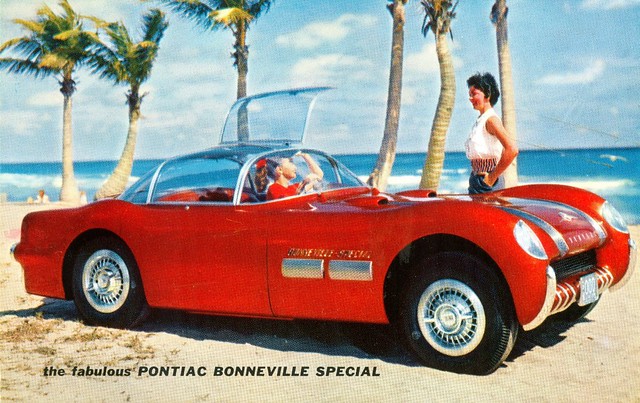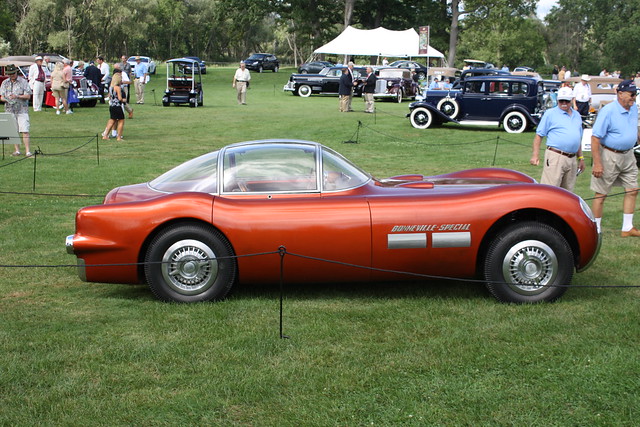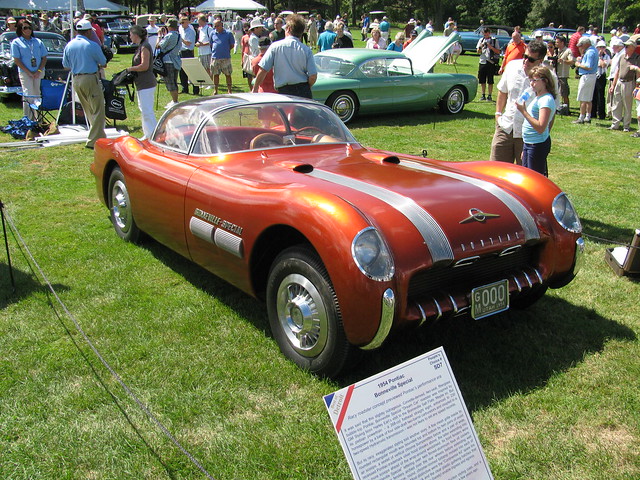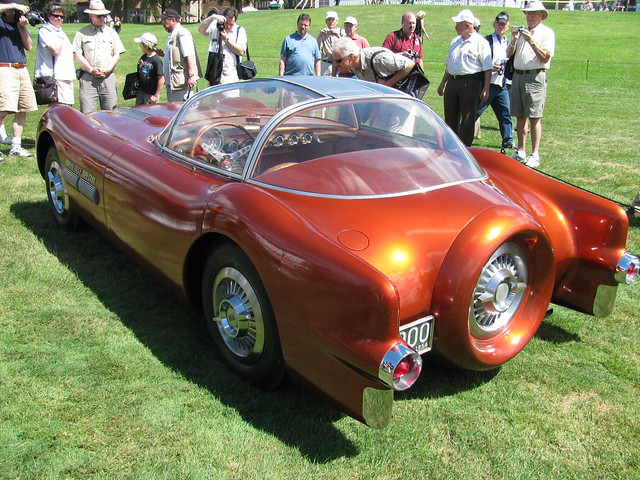BOLD RIDE
Copyright © 2015 Bold Ride LLC.

The 1950s was a time of great anticipation. The end of WW2 in 1945 bestowed on the United States the twin blessings of economic prosperity and groundbreaking technological advancement. Americans looked forward to a future filled with amazing new devices like flying cars, personal jet packs, and robot maids and butlers.
While none of those things exists yet, the excitement during the decade about air travel and space flight was vindicated by the launch of Sputnik in 1957 and the continuous development of better and faster jets.
Harley Earl recognized this when he set out to build a pair of concept cars for Pontiac inspired by rocket and aeronautic designs of the 50s. Unveiled in 1954 at the GM Motorama, the two vehicles, which were named Bonneville Special Concept Car after the Utah salt flats, incorporated design insights and innovations that are still considered ingenious today.

Everything about their design suggested air travel. The headlights were recessed and covered by glass, twin rows of louvers and “silver streaks” on the hood fed oxygen to the working air scoops, and the rear had double fender fins and exhaust chrome ports. The effect was not unlike that of the rocket ships featured in the science-fiction movies of the time.
Their interior reflected the same futuristic theme. The dashboards were designed to resemble a jet cockpit, with a sleek, almost utilitarian instrument panel layout. The gauges were inset behind brushed metal trim, and the driver and his single passenger sat in leather, parabolic-shaped bucket seats.
The key slots and shifters sat in the center console, and directly over the tri-spoke steering wheel, set apart from the other gauges and instruments, was the oversized speedometer, with showed a maximum speed of 120.
An Engine Worthy of a Space Ship

The engine used for this concept car was a straight-8 268 c.i. power plant, accented in chrome and painted a bold crimson shade. It was the most powerful motor Pontiac had at the time and was used only in the two Bonneville concept cars.
The four-carb configuration (yes, four) was the same as that used in the ’53 Corvette. Estimates of its horsepower vary, from a low of 230 hp to a high of 300 hp. The tranny was a four-speed Hydramatic automatic.
Legacy

The spirit of the twin Bonneville concept cars lived on through design innovations carried on to production models. The double air scoops were used again, both on the ’67 Firebird and the ’68 GTO. The horizontal louvers that graced the fenders were adopted for the ’57 Star Chief Bonneville and 1965’s 2+2. And the tail fins on both the ’55 and ’56 Pontiacs came directly from the Bonneville.
The spaceship-like instrument panel made an appearance on the ’58 production Bonneville, and the eye-catching finned wheel covers inspired a similar look on Pontiac’s famed 8-lug aluminum rims that were used starting in 1960.
Happily Retired

As for the two concept Bonnevilles that led to all this innovation, one is currently owned by Joseph Bortz of Highland Park, Illinois, and the other was sold to an unnamed buyer at a 2006 car auction. The mysterious purchaser paid a cool $2.8 million for a piece of automotive history.

No comments:
Post a Comment